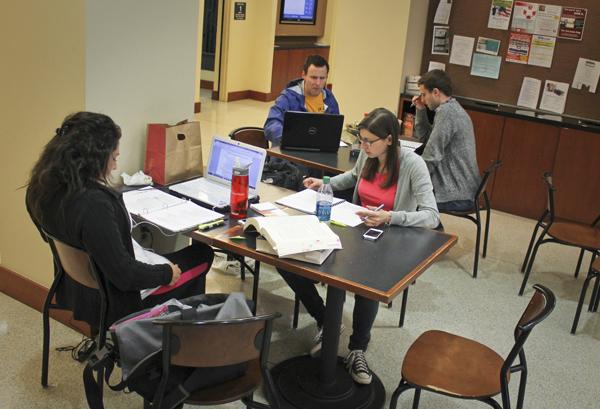The number of graduate students at GW slumped for the first time in 13 years, even as the University saw double-digit growth in its international student population and officials poured resources into online graduate programs.
The 2 percent drop in enrollment, which hit six out of GW’s 10 schools, translates to about 200 fewer students. The decline – which ranged from nearly 9 percent to less than 1 percent in those six GW colleges – likely equals millions of dollars in lost tuition revenue.
Because of a D.C.-imposed enrollment cap for undergraduate students who live on campus, expanding the population of tuition-paying graduate students over the last decade has helped accelerate the University’s overall financial growth. And it’s worked, making GW the 18th largest supplier of master’s degrees by 2012.
The most surprising enrollment declines came from the College of Professional Studies, which saw its first ever decline, and the School of Public Health and Health Sciences, which has fewer students in classes this fall for the first time in nine years.
The public health school, recently one of the fastest-growing across GW, saw a 4 percent decline in graduate enrollment in the same year administrators rolled out a fully online degree that officials estimated could eventually bring in up to 700 students.
Provost Steven Lerman declined to say how the University would work with each school to raise graduate enrollment, adding that the year-to-year changes “have no real effects on the overall quality of those programs.”
“It’s far too soon to know if the small declines in some schools’ graduate enrollments are the start of a trend or just part of the regular statistical variation in enrollments,” he said.
He told the Washington Post in May that national growth for graduate degrees could eventually “taper.”
“There’s no guarantee it will go on forever,” he said.
GW’s decrease is on par with the national enrollment trends in recent years. Jeffrey Allum, director of research and public policy for the Council of Graduate Schools, said universities won’t post big enrollment gains until they can draw from the larger pool of American students seeking higher degrees.
The overall enrollment decline came as the number of graduate international students at GW shot up by 14 percent, giving GW and other U.S. universities a previously untapped applicant pool.
The steepest drop across GW came from the Graduate School of Education and Human Development, where enrollment fell nearly 9 percent. That decline marks the fifth year enrollment in the education school has decreased, which Dean Michael Feuer called a “short-term dip from which we will rebound.”
“We don’t believe the current decline in some of our programs is the ‘new normal,’” Feuer said in an email. “It’s important to acknowledge the complexity of these ups and downs, maintain a ‘long view,’ and not overreact to any one data point.”
The decreases come amid a 2 percent nationwide drop in enrollment in education degree programs in the last decade, according to the Council of Graduate Schools, and Feuer noted that other top education schools have also watched their numbers decline in recent years.

To make up for the decrease in tuition revenue, Feuer said he is focused on increasing donations to the school and securing outside funding for research.
Other administrators are searching for reasons for enrollment declines.
Frederic Lemieux, the director of several intelligence and security-focused programs in the College of Professional Studies, said fewer government contractors have turned to GW for training programs after the sequester. That, combined with the shutdown, “created a lot of uncertainty,” Lemieux said.
Lemieux also said he felt lucky to have avoided any drops in enrollment in his own programs, which he said was likely tied to an increase in GW’s outreach to the military and veterans communities. About 65 percent of students in his programs come from a military background, he said.
-Cory Weinberg contributed to this report.








